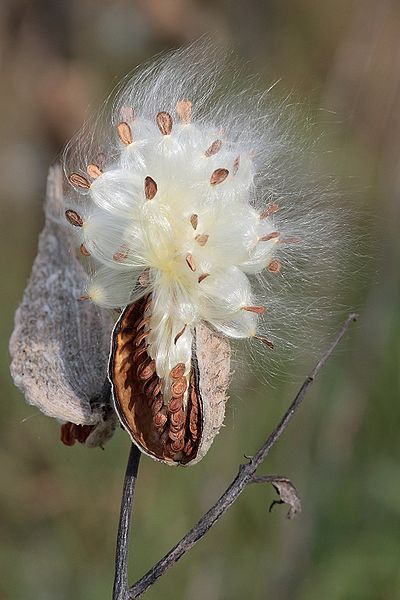I moved out of Chicago (in the middle 1990s) and relocated to the far northwestern part of Illinois, I noticed that the Milkweeds I had grown in my Chicago backyard -to attract butterflies -were nowhere to be seen in my new home, and that any butterflies I found around my new home were weak and dying.
Odd, right! Especially since I was out of the city and surrounded by farms and open prairies. Miles of Illinois countryside. I had assumed the butterflies would be abundant. I was wrong.
Humans have always ignored the tiny life forms that buzz and flutter around; we were lead to believe they were unnecessary and an inconvenience. We are slowly understanding how wrong we were and that we need to protect nature if the human race is to survive.
Before I moved permanently out of Chicago, I had gathered Milkweed seed pods from my Chicago garden and planted them into my new garden.

As my property grew upward and blocked some of my Milkweeds from the farm fields pesticide, my Milkweeds proliferate, and they attracted Monarchs.
In 2015, The Washington Post had an article, “As pesticides wipe out Monarch butterflies in the U.S., illegal logging is doing the same in Mexico.”
Monarchs are the world’s ‘miners canaries’ are we listening? Large companies profit from the production and sales of poisons. Those companies are feeding on our fears of bugs or insects known as Entomophobia or Acarophobia.


We have groups like the Monarch Way Station NetWork.
http://www.monarchwaystationnetwork.res.ku.edu
The Monarch Conservation Database of the U.S. Fish and Wildlife Service~ “We have developed a database to capture information about recently (i.e. since 2014) completed, ongoing and planned conservation efforts for the monarch butterfly….This includes improving and creating habitat by enhancing milkweed and blooming nectar plant resources.”
This is a wonderful site to find out how to help the Monarchs in your own backyard.
http://www.monarchwaystationnetwork.res.ku.edu/direct-action/
“Monarch populations have already lost an estimated 165 million acres of breeding habitat across the United States to herbicide spraying and development. Yet when the Environmental Protection Agency approved new dicamba products in 2016, it did not even analyze risks to monarchs” ~kansascity.com

And then there is Monsanto. Heavy sigh… the company that profits from the sales of their pesticides. Monsanto is also in control of our food supply.
All of the Monarch pictures are my own. All photo’s and the video were created in my yard. A big ‘Thank You’ to the Monarchs. If you would like to have your own butterfly garden check out ‘Pollinator Habitat’ at the Monarch Waystation Network
What are your thoughts on the plight of the Monarch? What are your thoughts on Monsanto?



